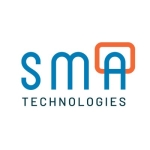What is our primary use case?
We have a use case that involves an invoice billing process, where vendors from an external organization submit their details for the invoice. This automation works as expected, independently of anything else. It is also a good example of how we were able to scale RPA benefits in the company with the automation of a specific process that requires human-robot collaboration.
Our internal tools include the database where all of this information is stored, and we have a second automation that is used by the billers in our organization to tally the data that includes details such as what each vendor has submitted to get their payments.
We built a third automation in UiPath, which basically compares these first two. But, due to the complexity and the nature of the tally that has to occur, we require some human input in between certain steps.
For these particular steps, we have developed a four-bot configuration. These are four separate bots that run and a couple of them have an attended automation part, where a human can intervene. It's a verification step, where the human can decide whether or not something is okay. Specifically, the bot compares two fields and if they match, then it's great, but if not, it triggers a request to a human user for manual verification. If they approve then it is marked as a successful verification.
Because we use technologies like OCR, there are details that cannot always be interpreted properly. This is where we need an additional check, which is the reason that we have humans in the loop as part of the process.
How has it helped my organization?
We have saved a lot of time by using UiPath. We have also improved a lot in terms of accuracy and reducing errors in a lot of projects. In fact, in one of the projects, we automated the entire job, which involves coaching people on what has to be done end-to-end, by the robots. It was built on UiPath and on this project, we had a savings of more than €100,000 euros. That was a big saving for us, and it's continuing right now.
More importantly, a lot of the clients had complained about the end-user, which is outside of the organization, with respect to the accuracy of the data. There were errors. When we deployed robots based on UiPath, the accuracy has vastly improved and the clients are very happy with the results. They no longer have to keep coming back to our billers and telling them that things were not done properly. The robot functions like it has been programmed every single time. So, it's been perfect for that purpose as well. The customer trusts us more because of our deployments in robots.
UiPath definitely allows employees to delegate mundane tasks to their personal automations, saving them time. A major reason for a lot of our automation cases is because most people are not 100% involved in certain tasks. For example, if you spend two hours on a particular process, and then over the next four or five hours, you're supposed to be working on more complicated processes, but what happens during the first two hours is that things get complicated and the day is ruined dealing with small tasks. Now, suppose that the two-hour allotment for the smaller process is automated using UiPath, the person is free to dedicatedly perform more important functions. In the entirety of our automation effort, this has been a primary driver for all of the new use cases. It's a huge plus for us.
With respect to employee satisfaction, it has been a mixed result for us. In certain cases, it's been a huge boon because there was a heavy workload on the employees and UiPath really helped them cope with it. This was especially true during COVID when the workload increased exponentially, and people could not go into the office. However, there were times in the past when people were no longer required because UiPath was doing their jobs perfectly, making them redundant. As they were no longer required, they left the company.
So, we have had both scenarios, but moving forward, instead of telling people that they're no longer required, we have retasked them to other projects. Essentially, we have reabsorbed them and in turn, have simplified the hiring process. In this regard, we have adjusted.
What is most valuable?
The new UiPath assistant is very good.
The customizable forms that UiPath has recently launched allow us to give the user an exact input that they can provide. Being able to customize this is extremely helpful for us because we have other attended automation processes, and they can each be tailored to the needs of the business.
We use the selector technology for automating processes with dynamic interfaces on a daily basis in almost all of our projects. Our extensive use of this feature includes all of the different kinds of selectors that UiPath allows. We have the flexibility to modify these selectors as per our need. This functionality gives UiPath a big edge over its competitors and I know this because I've personally used products by other vendors. The selection-making process is much simpler with UiPath, with improved accuracy and reliability.
This feature is important because a lot of the processes are Citrix-based or remote desktop applications. Because the robot would not have a direct connection to the application, we have to use Citrix technology. All of the applications are different in nature, so having the flexibility to switch between different kinds of selectors and select our activities allows us to build the perfect solution for remote applications. Even the performance, in my experience, has been the best, especially for Citrix-based automations or remote desktop-based automations.
What needs improvement?
There are a few features that could be improved, and one of them is good integration with the Microsoft ecosystem. For example, Microsoft launched Power Apps as its platform, and even though its capabilities are not as good as UiPath, it has the advantage of being so well-integrated with Excel Online, Word, and everything else. We don't have to perform a lot of development work, and it's pre-approved in our organization. Applications like SharePoint are another example of pre-approved solutions. But with UiPath, we have to prove that it's a secure process. Simply put, a stronger collaboration between Microsoft and UiPath in a lot of areas would be helpful because it would ease the development process for us.
Another example is with the Automation Hub. At this time, Automation Hub does not allow you a direct login process or single sign-on option using Azure Active Directory. This means that you're limited to going through either Gmail or something else. This is true for the on-premises solution, not the cloud one. Although we had decided to purchase the Automation Hub license, this lack of functionality held things up because we did not want to manually go in to update all of the new users again and again. We wanted the information to be picked directly from Active Directory whenever a user wanted to sign up for it.
Buyer's Guide
UiPath Platform
September 2025
Learn what your peers think about UiPath Platform. Get advice and tips from experienced pros sharing their opinions. Updated: September 2025.
869,095 professionals have used our research since 2012.
For how long have I used the solution?
I have been using UiPath Attended Automation for approximately three and a half years.
What do I think about the stability of the solution?
In the past, stability has been great. However, more recently I have been facing some issues, and I'm hoping for some resolution. For example, we recently upgraded to the new orchestrator in Studio, and we had to upgrade a few packages also, In particular, the UiPath automation packages.
Some of our GUI activities, which are not fully backward compatible, have been facing some issues. Consequently, some of our bots have been impacted. We have already raised the issue and we are in discussion to find a resolution. This was the first time we actually faced an issue in terms of reliability with UiPath.
Our past experience has been very good, and I cannot say that we have any complaints regarding the reliability of UiPath solutions.
What do I think about the scalability of the solution?
Scalability-wise, it is very good. It is easily scalable and we have a lot of options for expanding and configuring as per our requirements. It is also customizable.
We have a team of between 20 and 30 people, which includes approximately 10 developers, 5 team leads, two architects, two production managers, and one overall manager. We have some contractual workers, as well.
We have approximately 35 automations that are in production right now. From a process perspective, we have pretty much worked on all verticals including finance, healthcare, internal IT processes that needed automation, and more. An example is ServiceNow, where jobs like creating user accounts, deploying new machines, and other administrative tasks have also been automated. HR processes, including onboarding, have been automated.
It is a very large organization, and there are lots of processes, so I expect that our usage will grow.
How are customer service and support?
The technical support is excellent in our experience. Whenever we have had a problem, they've always been there to support us and help us with the problem. I don't have any complaints, as they've always made the effort. Even if things have taken longer than we had hoped or expected, they've always come back with the best resolution they can offer.
Which solution did I use previously and why did I switch?
I have worked with Blue Prism and in my experience, UiPath does a much better job, both in terms of dev and listening to the community. For example, Blue Prism is a very closed community and very limited. They have improved, I would say, based on the success of UiPath, but it's not very open-source or open-natured.
The biggest advantage that I have noticed is with Citrix-based automations or remote desktop automations. There are cases where Blue Prism did not work, but UiPath was very good. I did not have to spend too much time with UiPath before it worked perfectly. The reliability was also great.
More importantly, UiPath listens to the customers as well as the developer community, and in turn, they implement features that make their lives easier. They constantly reach out for feedback and it's a good process because it helps to know that the customer is happy. If I am speaking about myself, I'm happy that if I have a need, or I'm facing some challenges, I put it in the pipeline for UiPath and within six months, I will see that feature live in production.
How was the initial setup?
We started with a disaster recovery scenario, where we have one live production orchestrator, as well as one backup orchestrator and a load balancer installed. This is a high availability disaster recovery (HADR) configuration, where all of our live bots are on the main orchestrator. In the case that the live orchestrator goes down, we have the backup orchestrator kick in.
The overall deployment and installation process was simple. However, we did face some issues with the Redis part. Configuring Redis was one of our pain points, and we reached out to UiPath about it.
Although it was resolved, it took a lot of time and effort, from our end as well. That was the only experience that stood out as a problem for us. But overall, it was a smooth process.
It took about a week to set everything up, although we had constraints from our own internal infrastructure team. The delay was not related to UiPath issues.
What's my experience with pricing, setup cost, and licensing?
The licensing is close to optimum; however, there is room for improvement in both the cost and flexibility of the licenses. It isn't the best pricing in the market but it's pretty close.
What other advice do I have?
For developing our attended automation, we began by coding the bot to our requirements, and then made modifications to it for attended automation.
My advice for anybody who is considering UiPath is to be sure of what your needs are regarding an RPA product. If you're looking for something very small-scale, very easy, then there are a lot of options. But if you're looking for a long-term, feature-rich solution, which has access to third-party integrations, then choose UiPath.
You will require a development team, at least to some level. UiPath is now simpler with the Studio X products, but in the past, it was a bit more challenging to dive deep into UiPath directly. It required some training but now, things have definitely improved.
One of the major lessons that I have learned from using UiPath is to make sure that everything is documented well. There is a lot that needs to be tested before bots are put into production because a lot of things that work on your local machine may not work on another. It can vary from machine to machine and where something works on one, a change in environment for another may cause it to fail. This means that you should change from machine to machine during the testing phase.
Overall, I feel as if now UiPath is on the right path with its competitors. It is a very good long-term solution.
I would rate UiPath a nine out of ten.
Which deployment model are you using for this solution?
On-premises
Disclosure: PeerSpot contacted the reviewer to collect the review and to validate authenticity. The reviewer was referred by the vendor, but the review is not subject to editing or approval by the vendor.

















